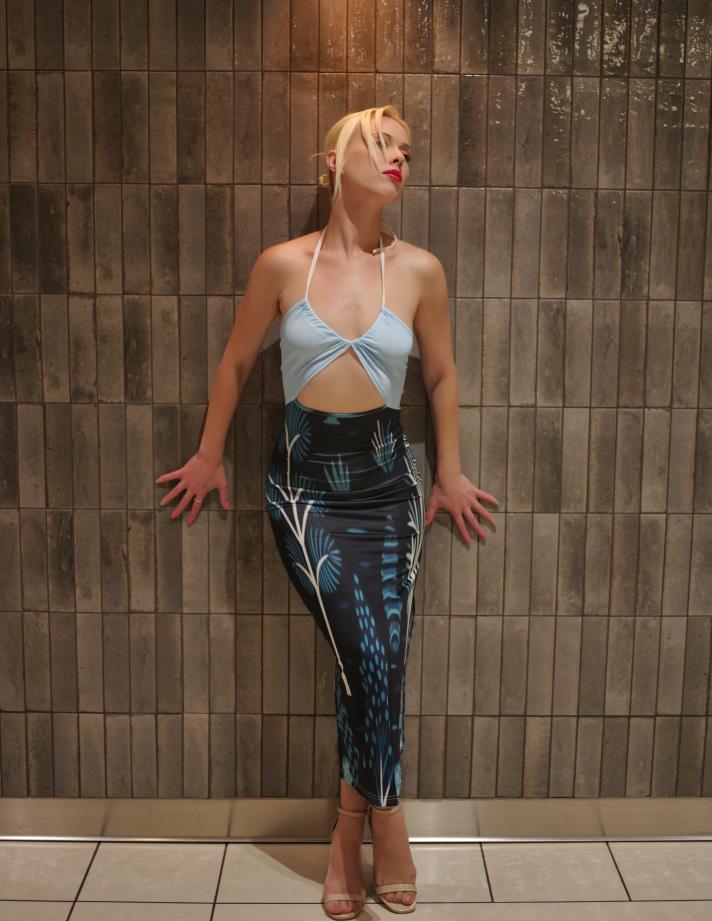In the ever-evolving world of fashion, it is undeniable that women's fashion has consistently taken center stage, while men's fashion seems to lag behind. Despite societal strides towards gender equality, the discrepancy in attention, creativity, and innovation between these two domains persists. This article explores the enigmatic reasons behind the chasm, delving into societal norms, marketing strategies, and the evolving perception of masculinity in the modern era.
(Follow us on Instagram: Runwayfashionstreet_Toronto)
1. Societal Norms and Expectations
One of the primary factors contributing to the lag in men's fashion is deeply ingrained societal norms and expectations. Throughout history, masculinity has been defined by a rigid set of standards, emphasizing strength, stoicism, and practicality. These norms dictate that men's clothing should be straightforward, functional, and, above all, devoid of frivolity.
In contrast, women's fashion has evolved to embrace a wide spectrum of styles, from the elegant and glamorous to the experimental and avant-garde. Fashion designers have found more creative freedom when designing for women, as societal expectations allow for greater expression and experimentation.
2. The Commercialization of Women's Fashion
The commercial aspect of the fashion industry also plays a significant role in the disparity between men's and women's fashion. Historically, women have been the primary consumers of fashion products, leading designers and brands to invest heavily in the women's fashion market. As a result, there has been a proliferation of women's fashion outlets, fashion shows, and marketing campaigns catering to their varied tastes and preferences.
Conversely, men's fashion has been overshadowed, receiving less marketing attention and innovation. The perceived lack of interest in men's fashion has perpetuated the stereotype that men are not as invested in their appearance as women, further discouraging designers from exploring more diverse and creative avenues for men's clothing.
3. The Dilemma of Reinventing Masculinity
Men's fashion also grapples with the dilemma of reinventing masculinity in the modern era. The traditional notions of what it means to be a man clash with the rising demands for gender fluidity and expression. Breaking free from the rigid confines of old-school masculinity requires a profound shift in societal perception, fashion, and marketing strategies.
As women's fashion liberates itself from the shackles of gender norms, incorporating a vast array of styles, colors, and cuts, men's fashion struggles to find a balance between embracing change and remaining authentic to its traditional roots.
4. The Psychological Factor
Psychologically, men may have been conditioned to be more risk-averse when it comes to fashion choices. In a culture that associates masculinity with toughness and resistance to change, men may be discouraged from experimenting with fashion and embracing their personal style.
Moreover, the lack of representation of men's fashion icons compared to women's fashion icons can make it challenging for men to envision themselves stepping out of the ordinary and into the extraordinary.
5. Fashion Industry Leadership
Another pivotal aspect contributing to the gap is the lack of representation of men in the upper echelons of the fashion industry. Historically, men have dominated leadership roles in the fashion world, from designers to executives, which may lead to a limited perspective on men's fashion potential and restrict its growth.
A more diverse leadership that includes men who understand the need for change and innovation in men's fashion could potentially reshape the industry's dynamics.
In conclusion, the lag in men's fashion when compared to women's fashion is a multifaceted issue rooted in deep-seated societal norms, commercialization, masculinity's evolving definition, psychological conditioning, and industry leadership. To bridge this gap, a collective effort is required from designers, marketers, influencers, and society as a whole.
Challenging traditional notions of masculinity, embracing creativity, and providing men with a platform to explore their fashion identities are essential steps toward reshaping the landscape of men's fashion. As we strive for a more inclusive and progressive society, we must recognize that fashion is a powerful tool to express oneself and defy societal constraints, regardless of gender. Only then can men's fashion rise to the same heights as its female counterpart, and the fashion industry can truly evolve into an all-encompassing realm of self-expression and artistry.
